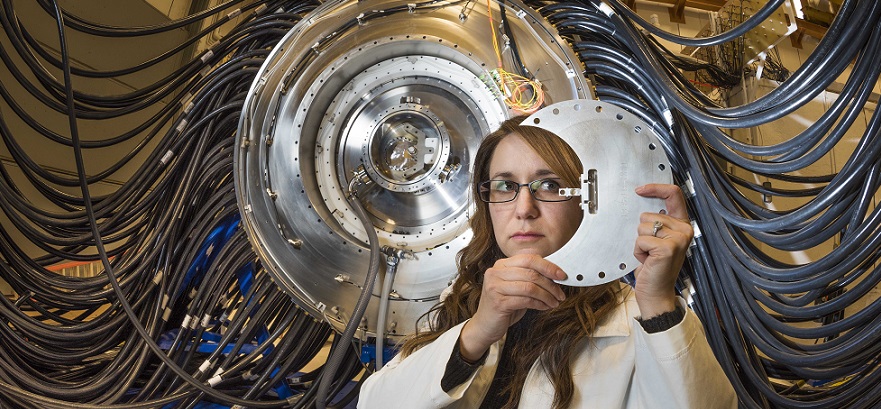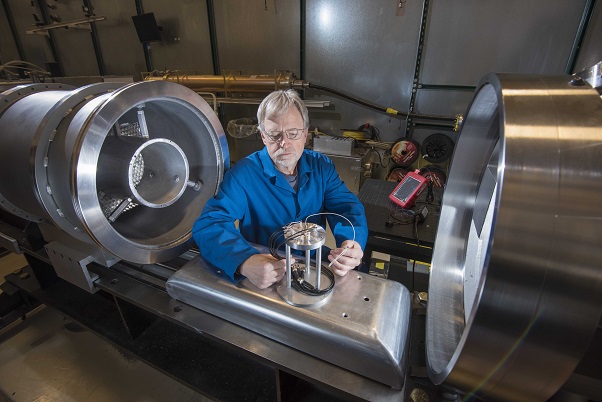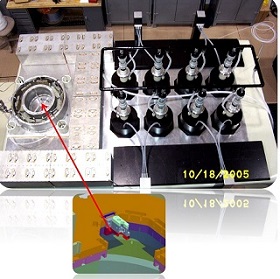
Thor Machine
DICE Facility
The Dynamic Integrated Compression Experimental (DICE) facility, within Sandia’s Solid Dynamic Physics Department, is one of a few institutions in the world with a major shock-physics program. This is one of few experimental test facilities in the world that can provide multiple platforms for material property study utilizing compressed gas launchers and ramp-loading pulsers with pulse shaping abilities.
Material Characterization
Shock wave experiments are an established technique to determine the equation of state at high pressures and temperature, which can be applied to virtually all materials. This technique allows the probing of the internal structure of the material as it undergoes deformation. This provides a better understanding of the material properties for development and the refining of material models and helping to develop new materials. We provide nearly a half-century of experience in dynamic material characterization and diagnostic development.

Technician preparing to load a target plate with diagnostic probes into the DICE gas gun
How does a DICE experiment work?
Unique to DICE is the ability to perform not only shock, or isotropic, compression but also ramped, or isentropic, compression of materials. This allows direct comparison under different distinct loading conditions of the sample under test. A typical DICE gas gun shot consists of a projectile with an impactor on the front surface being launched, by compressed gas, down the gun barrel into a target sample.
A typical experiment on either the VELOCE or THOR pulsed power machine involves mounting samples in a conductive holder and then installing these on carrier plates in the machine. During firing the large current discharge flowing on the surface of the sample holders imparts a high magnetic pressure into the holder and therefore into the sample. Diagnostics collected characterize the impact and the material response. The vacuum tanks are sized to hold material to slow down and then stop the debris. The material used to stop the samples/projectile depends on whether the sample recovery system is employed.
What diagnostic capabilities does DICE bring to the game?
A typical DICE shot on any of the platforms would at minimum employ optical diagnostics, either VISAR or PDV, to time resolve the shock wave conditions in the sample of interest. High speed video photography may be employed on the gun to record the interactions of interest during impact on the sample or recovery sequence. The facility also has systems to pre-heat or pre-cool samples prior to the shot. Another primary function of the facility is to provide cost effective platforms to test diagnostics that are under development, such as x-ray diffraction and various in situ temperature measurement methods.
The DICE 3″ compressed gas driven gun is capable of velocities to 400 meters/second with large projectiles.
VELOCE is a 3.5MA Isentropic driver capable of pressures to 12GPA with large (12mm dia) samples.
The DICE Target Fabrication Lab with precision measurement capabilities.


